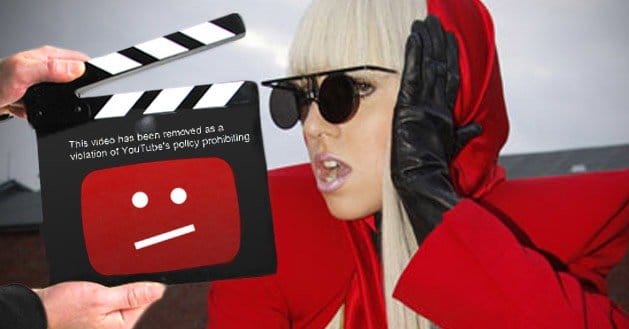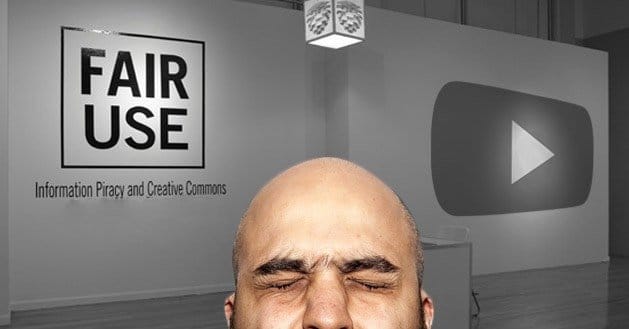 Written by ContentPowered.com
Written by ContentPowered.comYouTube is home to millions of videos with new content being uploaded every second of the day, but there’s the looming chance that your videos may be taken down by YouTube for various reasons. If you’d like your video back up and don’t believe you have done anything wrong, your best chance to get the removal overturned is with a dispute or appeal.
After a video has been removed, the uploader has the chance to get the video back up by providing YouTube’s staff with reasons why the video follows both terms of service guidelines and copyright restrictions. To properly start the dispute and appeal process for a deleted video, follow these steps.
Step One: Finding Out the Reason for Removal
This is a relatively simple step in the process as YouTube almost always provides the user with the reason why their video was removed. For instance, if the video has copyrighted content in it the video will have blue text underneath the video description in your video manager stating that the video’s content has been matched with third-party content or that the video has been taken down by the request of the owner of the copyrighted content.
If you have too many videos to sift through to search for removed items, go to the video manager and go under the section titled “Copyright Notices.”
YouTube also usually sends an email to the uploader notifying them of removed videos while usually providing the reason for removal in the email.
Step Two: Figuring Out if the Video Should be Disputed
The dispute process should only be used when you believe that your video was wrongly taken down and you can prove that your video followed community guidelines, terms of service for YouTube and was under fair use for any copyrighted material.
For videos that got caught under YouTube’s automatic copyright ID match system, you may appeal if the video doesn’t have the content that is supposedly being matched or if the content is under fair use. Videos specifically taken down by request of a third-party for copyright can be disputed if the video is under fair use.
Step Three: The Use of Fair Use
Fair use is the right to use copyrighted material in your own uploaded videos as long as you follow some key guidelines. There are several gray areas in the world of fair use, but here’s the most common areas that users on YouTube would likely tread into.
Fan made music videos are clips of TV shows, cartoons, anime, movies and more edited to music to make a music video. These are very much a mixed bag when it comes to fair use. The video will likely be covered under fair use as these music videos usually use edited clips assembled together instead of one long unedited clip. However, the audio is almost always kept unedited and unaltered leaving it fairly vulnerable to copyright claims.
Parodies are also commonly held under fair use to a good extent. If there seems to be more long clips than actual parody, there may be a copyright issue.
Filming yourself while singing a copyrighted song in its entirety is also usually covered under fair use since it’s for fun and likely isn’t produced in such a high-quality manner that it would threaten the original creator’s income.
Reviews, news stories and video game walkthroughs are also considered fine under fair use as long as there is more original content than clips. For instance, a video game walkthrough that contains no commentary is far more likely to be removed than a video game walkthrough with a completely original audio track made by the user.
Unedited clips, full episodes of TV shows or full movies, profiting from the use of a clip or music track in your videos and having little to no original content in the video means that it’s likely not covered by fair use.
Step Four: Making the Dispute
If you have determined that your video follows community guidelines, terms of service and is covered under fair use, go to your video manager and click “Copyright Notices.” Find the video that you want to dispute, click on the reason for removal and click “dispute.” Select what you believe are the best selections for your particular video and go through each question until you’re asked to explain why your dispute is valid. If the video was removed under terms of use or community guideline violations, explain clearly, kindly and professionally why you believe your video follows the guidelines. If the video was taken down for copyright reasons, explain why you believe the video is covered under fair-use by using the guide provided here.
Sign your full name as another show of professionalism and sincerity and submit the claim. It can take anywhere from a day or two to a month to get a judgment by YouTube’s staff.
Step Five: Appeals
If the content was left down or was taken down again under request of the copyright holder, you can make an appeal. The appeal process is very similar to the original dispute, only it requires more detail in the explanation and verification of your account through a cell phone number. Your contact information may also be requested for the sake of the copyright holder.
Not all videos are available for appeal, but you will need to ensure that your video is truly within guidelines and fair use laws with a good and solid explanation backing it if you want to have a chance at succeeding in the appeal.


Thanks for sharing this guide. But as per my opinion, youtube seems to pay almost no attention to the aspect of getting a video removed.